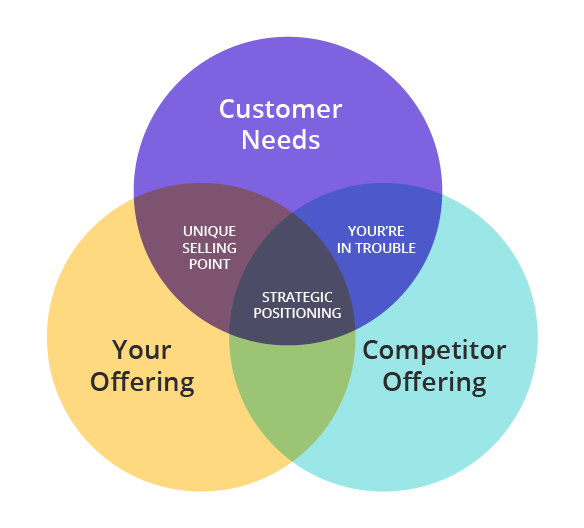Uncover the power of brand positioning with a value-based approach. Discover how this strategy can elevate your brand’s presence.

Image courtesy of via DALL-E 3
Table of Contents
- Introduction to Brand Positioning
- Understanding Values in Brand Positioning
- Identifying Your Brand’s Values
- Communicating Your Brand Values
- Building a Value-Based Brand Strategy
- Examples of Value-Based Brand Positioning
- Challenges in Value-Based Brand Positioning
- The Future of Value-Based Brand Positioning
- Summary
- Frequently Asked Questions (FAQs)
Introduction to Brand Positioning
In today’s competitive market, companies are constantly vying for the attention of consumers. But how can a brand stand out from the rest? This is where brand positioning comes into play. Brand positioning is all about how a company wants its target audience to perceive its brand among competitors. By strategically defining where the brand sits in the minds of consumers, companies can create a distinct identity that sets them apart. Taking a value-based approach to brand positioning is one way companies can differentiate themselves by aligning their values with those of their customers.
What is Brand Positioning?
Brand positioning is like giving your brand a personality in the eyes of consumers. Just like how each of us has unique qualities that make us stand out, brands also have characteristics that help them carve a space in the market. For example, think about how Nike is known for its focus on athletic performance or how Disney is synonymous with magic and imagination. These associations are no accident – they are carefully crafted through brand positioning strategies.
Why is Brand Positioning Important?
Companies can’t afford to be vague about how they want to be perceived. Brand positioning helps companies communicate their strengths, values, and unique selling points clearly to their target audience. When a company knows where it stands in the market and why it matters, it can attract the right customers, build loyalty, and ultimately drive success. Without a clear brand position, companies risk getting lost in a sea of competitors and struggling to connect with their audience.
Understanding Values in Brand Positioning
Values are the beliefs and principles that guide a company’s decisions and actions. They are like a company’s moral compass, showing what is important to them. For example, a company that values honesty will always tell the truth, even when it’s hard.
How Values Affect Brand Positioning
Values play a significant role in how consumers perceive a brand. When a company’s values align with what customers believe in, they are more likely to trust and support that brand. For instance, if a brand values sustainability and environmental protection, eco-conscious consumers will be drawn to it.
Identifying Your Brand’s Values
A company’s mission statement is like its guiding light. It tells everyone who we are, what we do, and why we do it. By looking at our mission, we can uncover the values that drive our brand forward. For example, if our mission is to create eco-friendly products, then one of our core values might be sustainability.

Image courtesy of www.brandedagency.com via Google Images
Ask Simple Questions
Figuring out our brand values can be as easy as asking ourselves some straightforward questions. Questions like “What do we stand for?” or “What sets us apart from others?” can help us pinpoint what matters most to our brand. By answering these questions honestly, we can uncover the values that define us.
Communicating Your Brand Values
In order for your brand to truly connect with your audience, it’s crucial to effectively communicate your brand values. Let’s explore some key strategies to ensure that your message resonates with your target market.
Use Simple and Clear Messages
When conveying your brand values, it’s important to keep your messaging simple and straightforward. Avoid using complicated language or jargon that may confuse your audience. Clearly articulate what your brand stands for and why your values matter. For example, if one of your core values is sustainability, you could say something like, “We care about the environment and strive to reduce our carbon footprint.”
Tell a Story
Storytelling is a powerful tool when it comes to communicating your brand values. Sharing anecdotes or narratives that illustrate your values in action can help make them more relatable and memorable to your audience. For instance, if community involvement is a key value for your brand, you could share a story about a local charity event your company sponsored and the positive impact it had on the community.
Building a Value-Based Brand Strategy
When it comes to creating a strong brand, having a strategy centered around your core values is essential. Let’s delve into the steps needed to build a brand strategy that focuses on what your company stands for.

Image courtesy of www.infotech.com via Google Images
Set Clear Goals
Before jumping into creating a brand strategy, it’s crucial to establish clear goals. These goals should align with your company’s values and mission. Think about what you want to achieve with your brand and how you want consumers to perceive it. Setting specific and measurable goals will guide your strategy and help you stay on track.
Create an Action Plan
Once you have your goals in place, it’s time to create an action plan. This plan should outline the steps you need to take to achieve your objectives while staying true to your brand’s values. Consider how you will communicate your values to your target audience, what channels you will use, and how you will measure the success of your strategy. By mapping out a detailed action plan, you can ensure that every decision you make aligns with your brand’s core values.
Examples of Value-Based Brand Positioning
One great example of a brand that effectively uses value-based positioning is Brand X. This company focuses on sustainability and eco-friendliness in all aspects of its products. From using recycled materials to promoting ethical sourcing, Brand X communicates its commitment to the environment through its brand values. This resonates with consumers who are increasingly conscious of the impact their purchases have on the planet.
Case Study: Brand Y
Another notable example of successful value-based brand positioning is Brand Y. This brand prioritizes social responsibility and giving back to the community. By partnering with local charities and supporting important causes, Brand Y has built a loyal customer base that values companies with a strong sense of purpose. Their brand message of making a difference has helped them stand out in a crowded market.
Challenges in Value-Based Brand Positioning
One of the major challenges that companies face when adopting a value-based approach in their brand positioning is staying true to their core values. It can be difficult to consistently align every aspect of the business with these values, especially as the company grows and faces new opportunities and pressures. Companies must ensure that their actions, messaging, and decisions always reflect the values they have defined for their brand.

Image courtesy of www.mjvinnovation.com via Google Images
Balancing Values and Business Goals
Another common challenge is striking a balance between upholding core values and achieving business objectives. While it’s important for a brand to stay authentic and true to its values, there may be instances where business goals conflict with these values. In such cases, companies must navigate delicate waters to find solutions that maintain their integrity while still driving success. This delicate balance can be a tricky tightrope to walk, requiring thoughtful consideration and strategic decision-making.
The Future of Value-Based Brand Positioning
As we look ahead to the future of brand positioning, several emerging trends are shaping the way companies approach their value-based strategies. One significant trend is the increasing focus on sustainability and social responsibility. Consumers are becoming more environmentally conscious, demanding that brands take a stand on important issues like climate change and fair labor practices. Companies that incorporate these values into their brand positioning are likely to resonate better with their target audience.
Adapting to Change
In a rapidly evolving market, brands must be agile and adaptable in their positioning strategies. The rise of new technologies and platforms for communication means that companies need to stay ahead of the curve to remain relevant. By continually reassessing their values and how they align with consumer preferences, brands can ensure that they stay at the forefront of their industry.
Summary
In this blog post, we discussed the concept of brand positioning and why it is important for companies to consider how their brand is perceived in the market. We highlighted the significance of a value-based approach in brand positioning, emphasizing the role of values in shaping consumer perception and brand success.

Image courtesy of big-village.com via Google Images
Main Points:
We started by explaining what brand positioning means and provided examples of popular brands such as Nike and Apple. Moving on, we delved into the influence of values in brand positioning, detailing how a company’s core values play a crucial role in shaping its brand image.
Readers were guided on how to identify their brand’s values by starting with their mission statement and asking simple questions to determine what they stand for. We discussed the importance of communicating brand values effectively through clear messaging and storytelling, making them more relatable to the target audience.
Moreover, we detailed the steps needed to build a value-based brand strategy, including setting clear goals and creating an action plan that aligns with the brand’s values. We provided examples of successful brands like Patagonia and TOMS, showcasing how they effectively use a value-based approach in their positioning.
Furthermore, we addressed the challenges companies may face when adopting a value-based approach, such as staying true to values and balancing them with business goals. Lastly, we explored the future trends in value-based brand positioning, highlighting the need for brands to adapt their strategies to the changing market landscape.
Overall, this blog post aimed to provide readers with a comprehensive understanding of brand positioning from a value-based perspective, offering insights to help companies effectively position their brands in the market.
Want to turn these SEO insights into real results? Seorocket is an all-in-one AI SEO solution that uses the power of AI to analyze your competition and craft high-ranking content.
Seorocket offers a suite of powerful tools, including a Keyword Researcher to find the most profitable keywords, an AI Writer to generate unique and Google-friendly content, and an Automatic Publisher to schedule and publish your content directly to your website. Plus, you’ll get real-time performance tracking so you can see exactly what’s working and make adjustments as needed.
Stop just reading about SEO – take action with Seorocket and skyrocket your search rankings today. Sign up for a free trial and see the difference Seorocket can make for your website!
Frequently Asked Questions (FAQs)
What is the Difference Between Brand Positioning and Brand Identity?
Brand positioning and brand identity are two important concepts in the world of marketing. Brand positioning refers to how a company wants its brand to be perceived by consumers in the marketplace. It involves creating a unique space for your brand in the minds of your target audience. On the other hand, brand identity is the visual and emotional representation of your brand. It includes elements like your logo, color palette, and brand voice that help to communicate your brand’s values and personality to the world.
Can Small Businesses Use Value-Based Brand Positioning?
Absolutely! In fact, value-based brand positioning can be particularly beneficial for small businesses. By clearly defining and communicating your core values, you can differentiate your brand from competitors, build customer loyalty, and create a strong emotional connection with your target audience. Small businesses that align their brand strategy with authentic values can not only compete with larger companies but also carve out a unique place for themselves in the market.







